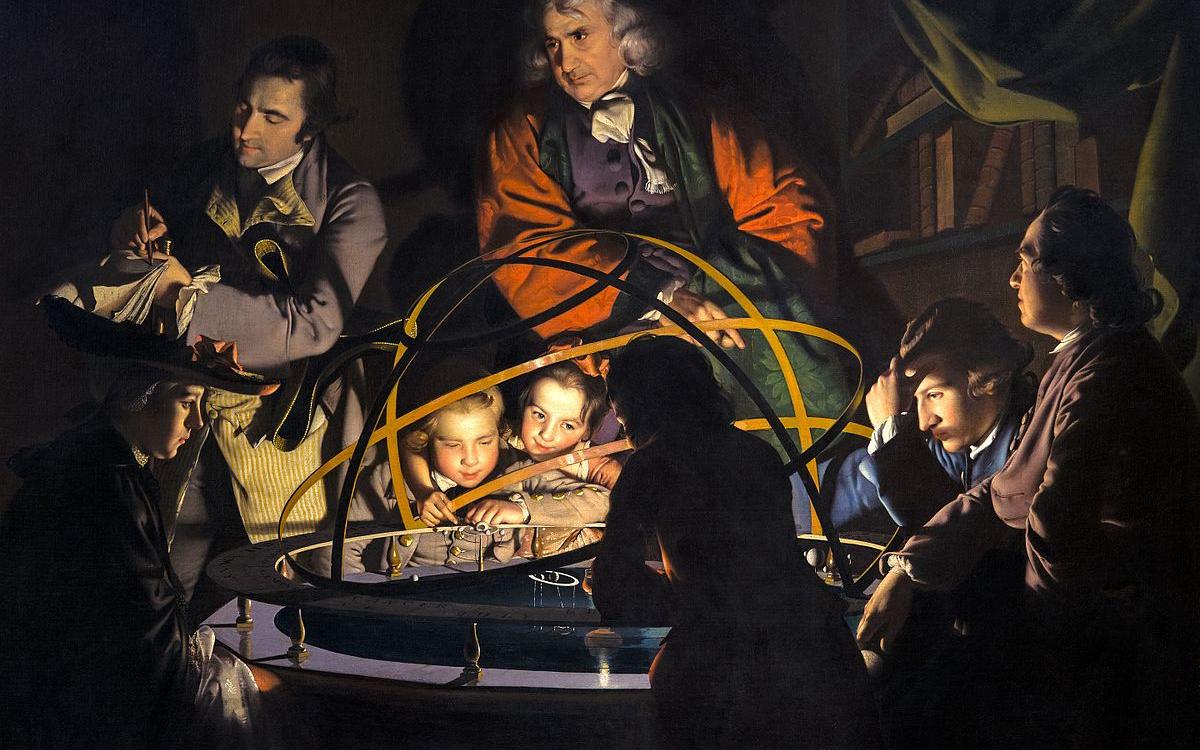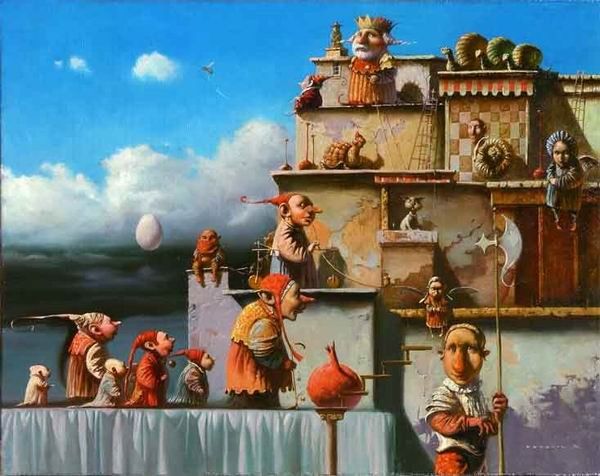
Re-inventing the 1st Chess Lesson
WAITING FOR THE KEPLER OF CHESS
Abstract
Every domain of human activity, be it in sciences, philosophy, arts, or any form of knowledge, have been undergoing transformations since time eternal in our never-ending quest for the ultimate truth. Chess is no exception. The revolutions always follow when the basic conceptual model, or paradigm, has collapsed, having lost its capacity to solve acute problems. It is in these times that the thinkers start questioning the field paradigm's fundamental assumptions. There are some warning signs indicating that the traditional moves-first teaching paradigm in chess is ripe for replacement in the 21-st century, (1) it is apparently afflicting millions with chess blindness, (2) although a game with very simple rules, chess reveals a very high attrition (drop-out) rate, (3) Nimzovich's statement (1929) that the traditional moves-first approach is "fundamentally flawed". In this article you are presented with an opportunity to see how our game is truly waiting for a Kepler and a Newton of chess, who would finally bring forth a modern and sounder paradigm for the 21-st century.
Quest for Forces Shaping (Chess) World
The contents of the universe have been divided, ever since Aristotle, into (a) elements of matter, and (b) interactions, or forces that these elements are acted upon.
We are going to see how thinkers in two domains have looked, throughout history, at this division and interplay between (a) celestial bodies (in astronomy), and (b) chess pieces.
Since ancient times and up to Kepler, cosmology had been a purely descriptive geometry of planetary movements in the skies. Under the Ptolemaic geocentric model, the Sun, stars and planets had all orbited the Earth.
Copernicus put things upside down by staging a revolution in thinking ― he introduced the heliocentric system. Still, the new paradigm was, too, dealing only with movements of material bodies, forces still being outside the picture.
Every domain defines their basic theoretical foundation that provides a starting point and a conceptual model for all further practice in the field, from which everything else springs up. It results from an outstanding scientific achievement on the part of a single innovator. At the same time, new paradigm commands uniform ascent among all members of the discipline.
There is the primacy and fundamental role of theories, perspectives, views in the acquisition and growth of knowledge. All life is (a) observation in the world, and (b) action in problem-solving as a result of (a). Yet without some kind of paradigm, all observation in the world is of no service at all.
Paradigms are traditions the historian of science would, for example, describe as,
― Copernican, or
― Newtonian (Newton's law of gravitation from the 1687 Principia was applicable in a perfectly general way; everything in the theory was ultimately reducible to so many individual bodies and the forces acting between them; this encouraged a model of relationships based on conflict and confrontation, on part against part, or
― Faraday's paradigm (it introduced the electromagnetic model of force field with lines of force permeating space around charges and currents).
Ever since prehistoric antiquity every domain crossed at some point the divide between its prehistory as a field and its history proper (it is a sign of maturity the discipline has achieved). These scientific revolutions typically introduce paradigm change.

Johannes Kepler and the Kaiser Rudolf II
.
"Truth" is only a Model of Thinking
So what all this, I hear you ask, has to do with chess? And what Kepler has to do with it anyway?
The thing is, and truly, it is hard to believe, that before Kepler, no one had ever hit on the idea of asking what physical causes of the movements of heavenly bodies might be.
Here there is a strikingly similar analogy with chess. Since its inception, the starting point has been the movements of its material bodies, the pieces. And yet, no one, absolutely no one in the entire history of chess, has ever asked the same question and tried to do what Kepler did for astronomy ― to bring meaning and better understanding in the field by introducing physics, that is interactions and forces between chessmen.
What Kepler did in A New Astronomy Based on Causation or Physics of the Sky in 1609 was to look at the sky, not through the eyes of the geometrician only, not merely describing the movements in the skies, but of the physicist concerned with natural causes. With only a vague intuition of gravity (something that Newton would expound on later in his Laws), Kepler sensed that there was an active force between the sun and the planets, a vis motrix (from motor, one that moves), which actually drives the planets. In other words, Kepler substituted the much more important Why for the How in the cosmic game of spheres.
"The greatness of the philosophers of the scientific revolution consists not so much in finding the right answers but in asking the right questions; in seeing a problem where nobody saw one before."―Arthur Koestler, The Art of Creation
.
A Chess Concept Yet to Be Discovered
So far no chess thinker has asked the same question as Kepler. And the question, again, is,
What actually drives chessmen during their never-stopping wars at the board? What is the Why of their moving around?
If physical forces operate between heavenly bodies, do they exist between chessmen too? Well, considering that chess had emerged as a game mirroring warfare, they do.
Now, my chess friends, the sad fact is, chess is still in its infantile Ptolemaic stage. When we, for example, start teaching the beginner, we talk the moves only. However, this approach (as strongly indicated by Nimzovich in 1929) has been failing to bring meaning and understanding to the table in the critical first period of learning when mindset of basic chess concepts starts forming upon the beginner's blank-slate. As I explained in the debate with GM Yasser Seirawan, the basics of chess is mindset, the way of thinking, the Why ― not the rules, the moves, the How.
Only the answer to, What drives chessmen? can shed the light on all "mysteries" at the chessboard. Without it, some ninety-nine or so percent of all chess entrants are failing to get beyond the moves, out of the Kindergarten of Chess. Too bad. For them. For chess. Dr Tarrasch's "like music, like love, chess can make people happy" does not find fertile ground.
Chess thus needs to marry the rules of movement, the starting point in chess since its prehistory, with acting forces, in other words piece relationships and interactions, so as to secure its escape from a, conceptually speaking, blocked situation, similar to that of the pre-Kepler astronomy.
New Chess (like Kepler's Astronomia Nova) needs to look at things using a new pair of binoculars; it begs for a new, meaning-giving matrix, outside its old traditional one with the moves at the center of chess universe. This would finally define a modern-and-sounder chess paradigm, and by doing so get the "science of chess" into its mature stage.

.
Chess as a Complex System
The ultimate goal of science is to "substitute visible complexity for an invisible, yet elegant simplicity" (the French physicist Jean Perrin).
To define this simplicity in chess, it is easy, we just need to consult the existing complex (emergent) systems theory from Sciences. Complex systems are based on very simple rules that nonetheless lead to very complex, intelligent behavior of its agents. Within a complex system, the agents form a network of interrelationships that brings meaning and purpose above the level of individual parts.
There are three levels of any complex system. They are,
1) Elements with their properties (chessmen have only three qualities, (a) they exert force and so influence other bodies in the surrounding Space; let us call it the striking power effect, (b) they cut lines of force of other agents; it is the body effect, and (c) they can move),
2) (network of) Interactions between elements (there exist only four, as per Averbakh, in all chess, (a) attack, (b) restriction, (c) protection, (d) cover/pin, plus (e) capture),
3) Elements' collective direction (purpose for the existence of system, its raison d'être, strategic objectives, goals, etc.)
Note: If you look at the structure above, you can easily recognize that the traditional early teaching concerns only with 1c). The rest is hidden to the beginner, and it remains in the Deep Dark. My Keplerian method, the first and only Relational teaching method for beginners, starts with 1a), 2) and 3) and only then offers the student an affordance to discover the moves (1c) on their own, without being told!
.

.
We Should All Speak Net-worth Paradigm
Any complex environment (ants colony, politics, families, business relations, thoughts and emotions, Web) is networked. All the same, the general public doesn't yet "speak networks."
We need to make network thinking next revolution in chess by bringing the networking paradigm to the fore, to the awareness of chess philosophers, educators and teachers. They need to internalize the new mechanisms of networks along which the chess dynamics takes place. As Prof Sheizaf Rafaeli put it, "your network is your net worth." And "the opposite of networking is not working."
.
No [chess]man is an island, entire of itself; every man is a piece of the continent, a part of the main.―John Donne (1572-1631)
.
Let us finally discover the contours of the chess continent! Interconnectedness will allow us to build up a picture of interactions and superimpose this picture onto any chess phenomena. If the networking paradigm can helps scientists work to find a cure for a disease as Ebola, it can also lead chess educators to find a remedy for the chess blindness disease. Capablanca, not by chance, said that the coordination of pieces is the main principle throughout.
Led by the new paradigm, chess "scientists" will adopt new instruments, reexamine their perception of the old environment and get reeducated to learn to see old familiar situations through a new gestalt. Chess primers, the very beginnings, the so called Chess Square One,is the first candidate to see a dramatic overhaul (actually I'm writing this blog with that in mind). Chess scientists will also look in new places, inaccessible before in the prehistory when no paradigm had been in place.
As Kuhn put it, the new situation would look like the entire professional community had been suddenly transported to another world, to another planet where familiar objects are seen in a different light.
The truth in science, and chess, is ever escaping, perhaps never fully attainable for us. Yet, by introducing new models of thinking, we get to it closer and closer, bit by bit, move by move, paradigm after paradigm.
Chess is still awaiting its Kepler... and Newton (perhaps a little bit too early for an Einstein)
.
References
Averbakh, Yuri, 2008, Chess Tactics for Advanced Players, Labate Chess
Cronin, Helena, 2012, This Explains Everything: Deep, Beautiful, and Elegant Theories of How the World Works, edited by John Brockman, Harper Collins
Koestler, Arthur, 1975, The Act of Creation, Picador
Kuhn, Thomas, 1962, The Structure of Scientific Revolutions, University of Chicago
Radovic, Momir, 2017, Principia Scacchorum: Bricks in the Wall, or How Chessmen Interact (from the series of my articles on the Principles of chess here on the site), https://www.chess.com/blog/RoaringPawn/principia-scacchorum-part-8-how-chessmen-interact
Rafaeli, Sheizaf, 2018, Network, in This Idea is Brilliant: Lost, Overlooked, and Underappreciated Scientific Concepts Everyone Should Know, edited by John Brockman, Harper Collins
